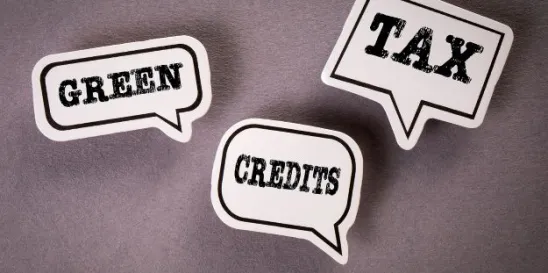The Inflation Reduction Act of 2022 (the “IRA”) now allows firms to develop and sell clean energy tax credits. In our last update, available here, we discussed the launch of the new IRS registration portal and the guidance that was released on several of the credits that are eligible for sale, signaling that a robust market for these credits is likely to develop in the near term.
Although tax-exempt and government entities are not permitted to sell clean energy tax credits, the IRA allows them to receive a cash refund from the IRS by making a “direct payment” election for certain credits. However, early data indicates a strong preference for sales of credits—which represent 98% of registrations—possibly signaling the difficulty for nonprofits to secure financing for large-scale energy projects.
Nevertheless, Treasury remains optimistic about charting a path forward, with Treasury Secretary Janet Yellen boasting that “more clean energy projects are being built quickly and affordably, and more communities are benefitting from the growth of the clean energy economy.” According to Deputy Treasury Secretary Wally Adeyemo, “the initial data is encouraging.”
Here are the latest developments on energy tax credits:
- Direct Pay: Entities treated as partnerships are not eligible for direct pay. On March 5, Treasury released proposed regulations, available here, that describe the process by which jointly operated projects may elect out of partnership status so that their otherwise eligible joint owners may receive direct payments. Treasury also finalized other guidance on direct pay related to the pre-filing registration process, the time and manner of the election and the no excess benefit rule in final regulations, available here. Additionally, Treasury and the IRS released Notice 2024-27 requesting comments on how eligible entities may be able to receive direct payment for purchased credits in response to requests from taxpayers to clarify whether this so-called “chaining” of credits is permissible.
- Clean Hydrogen Credit: The IRA established a new credit for producing clean hydrogen, a clean fuel that can be extracted by methods that generate low emissions. The hearing to discuss the comments on previously issued proposed regulations was held on March 25. Prior to the hearing, the response to the proposed regulations had been mixed, with many cautioning that the rules are too stringent to promote investment in clean hydrogen. One comment argued that the rules should facilitate the production of “blue hydrogen” produced with natural gas, which releases carbon dioxide as a byproduct, noting the possibility of reducing emissions through carbon sequestration.
- Bonus Credits: On March 22, Treasury released Notice 2024-30 in response to the growing demand for clarity on the IRA’s energy community bonus tax credit. Bonus credits can increase the amount of the credit from 6% to 30% of a qualifying investment, with the goal of making clean energy more economically competitive by supplying clean energy to qualifying energy communities.



 />i
/>i
